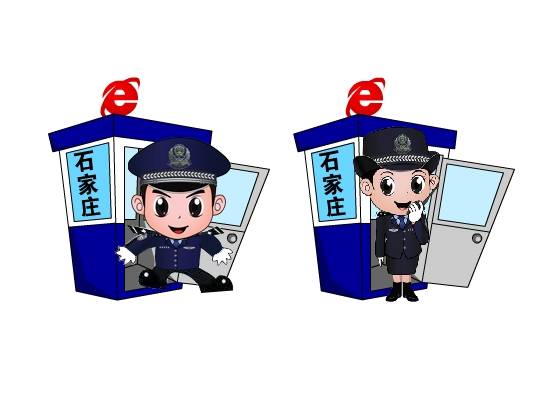实例介绍
【实例截图】
【核心代码】
package com.example.popup_vs_dialog;
import android.app.Activity;
import android.app.Dialog;
import android.graphics.Rect;
import android.graphics.drawable.ColorDrawable;
import android.os.Bundle;
import android.view.Gravity;
import android.view.LayoutInflater;
import android.view.View;
import android.view.ViewGroup;
import android.view.ViewGroup.LayoutParams;
import android.view.Window;
import android.view.WindowManager;
import android.widget.ImageView;
import android.widget.PopupWindow;
public class MainActivity extends Activity {
@Override
protected void onCreate(Bundle savedInstanceState) {
super.onCreate(savedInstanceState);
setContentView(R.layout.activity_main);
final ImageView img1 = (ImageView)this.findViewById(R.id.img1);
img1.setOnClickListener(new View.OnClickListener() {
@Override
public void onClick(View v) {
usePopup(img1);
}
});
final ImageView img2 = (ImageView)this.findViewById(R.id.img2);
img2.setOnClickListener(new View.OnClickListener() {
@Override
public void onClick(View v) {
useDialog(img2);
}
});
}
private void usePopup(final ImageView anchor){
//参考: http://www.cnblogs.com/sw926/p/3230659.html
LayoutInflater mInflater = LayoutInflater.from(this);
ViewGroup rootView = (ViewGroup)mInflater.inflate(R.layout.menu, null);
rootView.setLayoutParams(new LayoutParams(LayoutParams.WRAP_CONTENT, LayoutParams.WRAP_CONTENT));
final PopupWindow popup = new PopupWindow(this);
//setContentView之前一定要设置宽高,否则不显示
popup.setWidth(WindowManager.LayoutParams.WRAP_CONTENT);
popup.setHeight(WindowManager.LayoutParams.WRAP_CONTENT);
//去掉默认的背景
popup.setBackgroundDrawable(new ColorDrawable(android.R.color.transparent));
popup.setContentView(rootView);
//点击空白处的时候PopupWindow会消失
popup.setTouchable(true);
popup.setOutsideTouchable(true);
//如果focusable为false,在一个Activity弹出一个PopupWindow,按返回键,由于PopupWindow没有焦点,会直接退出Activity。如果focusable为true,PopupWindow弹出后,所有的触屏和物理按键都有PopupWindows处理。
popup.setFocusable(true);
//计算弹框位置
int[] xy = calcPopupXY(rootView,anchor);
//不用任何gravity,使用绝对的(x,y)坐标
popup.showAtLocation((View)anchor.getParent(),Gravity.NO_GRAVITY, xy[0], xy[1]);
}
private void useDialog(final ImageView anchor){
LayoutInflater mInflater = LayoutInflater.from(this);
ViewGroup rootView = (ViewGroup)mInflater.inflate(R.layout.menu, null);
rootView.setLayoutParams(new LayoutParams(LayoutParams.WRAP_CONTENT, LayoutParams.WRAP_CONTENT));
Dialog dialog = new Dialog(this);
WindowManager.LayoutParams params = dialog.getWindow().getAttributes();
params.width = WindowManager.LayoutParams.WRAP_CONTENT;
params.height = WindowManager.LayoutParams.WRAP_CONTENT;
//去掉默认的背景,下面两个都可以
dialog.getWindow().setBackgroundDrawable(new ColorDrawable(android.R.color.transparent));
//dialog.getWindow().setBackgroundDrawableResource(android.R.color.transparent);
//http://stackoverflow.com/questions/12348405/dialog-is-bigger-than-expected-when-using-relativelayout
//dialog默认都是有title的
dialog.requestWindowFeature(Window.FEATURE_NO_TITLE);//去掉标题,否则会影响高度计算,一定要在setContentView之前调用,终于明白有一个设置theme的构造函数的目的了
dialog.setContentView(rootView);
//计算弹框位置
int[] xy = calcPopupXY(rootView,anchor);
//gravity的默认值为Gravity.CENTER,即Gravity.CENTER_HORIZONTAL | Gravity.CENTER_VERTICAL.
//参考: http://www.cnblogs.com/angeldevil/archive/2012/03/31/2426242.html
dialog.getWindow().setGravity(Gravity.LEFT | Gravity.TOP);
params.x = xy[0];
params.y = xy[1];
dialog.show();
}
private int[] calcPopupXY(View rootView, View anchor){
int w = View.MeasureSpec.makeMeasureSpec(0,View.MeasureSpec.UNSPECIFIED);
int h = View.MeasureSpec.makeMeasureSpec(0,View.MeasureSpec.UNSPECIFIED);
rootView.measure(w, h);
int popupWidth = rootView.getMeasuredWidth();
int popupHeight = rootView.getMeasuredHeight();
Rect anchorRect = getViewAbsoluteLocation(anchor);
int x = anchorRect.left (anchorRect.right - anchorRect.left)/2 - popupWidth / 2;
int y = anchorRect.top - popupHeight;
return new int[]{x,y};
}
public static Rect getViewAbsoluteLocation(View view){
if(view == null){
return new Rect();
}
// 获取View相对于屏幕的坐标
int[] location = new int[2] ;
view.getLocationOnScreen(location);//这是获取相对于屏幕的绝对坐标,而view.getLocationInWindow(location); 是获取window上的相对坐标,本例中只有一个window,二者等价
// 获取View的宽高
int width = view.getMeasuredWidth();
int height = view.getMeasuredHeight();
// 获取View的Rect
Rect rect = new Rect();
rect.left = location[0];
rect.top = location[1];
rect.right = rect.left width;
rect.bottom = rect.top height;
return rect;
}
}
标签: Dialog
小贴士
感谢您为本站写下的评论,您的评论对其它用户来说具有重要的参考价值,所以请认真填写。
- 类似“顶”、“沙发”之类没有营养的文字,对勤劳贡献的楼主来说是令人沮丧的反馈信息。
- 相信您也不想看到一排文字/表情墙,所以请不要反馈意义不大的重复字符,也请尽量不要纯表情的回复。
- 提问之前请再仔细看一遍楼主的说明,或许是您遗漏了。
- 请勿到处挖坑绊人、招贴广告。既占空间让人厌烦,又没人会搭理,于人于己都无利。
关于好例子网
本站旨在为广大IT学习爱好者提供一个非营利性互相学习交流分享平台。本站所有资源都可以被免费获取学习研究。本站资源来自网友分享,对搜索内容的合法性不具有预见性、识别性、控制性,仅供学习研究,请务必在下载后24小时内给予删除,不得用于其他任何用途,否则后果自负。基于互联网的特殊性,平台无法对用户传输的作品、信息、内容的权属或合法性、安全性、合规性、真实性、科学性、完整权、有效性等进行实质审查;无论平台是否已进行审查,用户均应自行承担因其传输的作品、信息、内容而可能或已经产生的侵权或权属纠纷等法律责任。本站所有资源不代表本站的观点或立场,基于网友分享,根据中国法律《信息网络传播权保护条例》第二十二与二十三条之规定,若资源存在侵权或相关问题请联系本站客服人员,点此联系我们。关于更多版权及免责申明参见 版权及免责申明



网友评论
我要评论